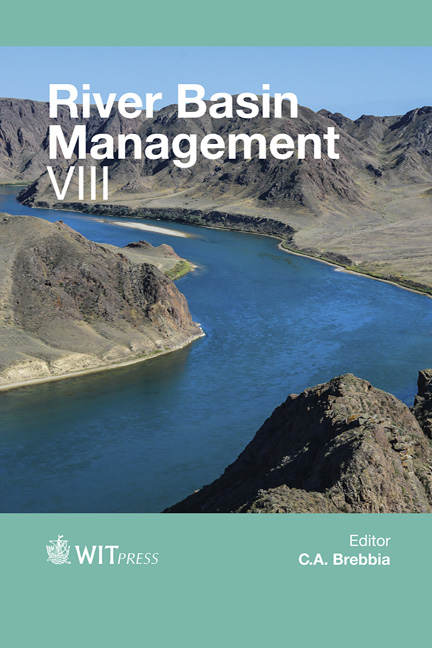Flood Flow At The Confluence Of Compound River Channels
Price
Free (open access)
Transaction
Volume
197
Pages
12
Page Range
37 - 48
Published
2015
Size
2,971 kb
Paper DOI
10.2495/RM150041
Copyright
WIT Press
Author(s)
T. Ishikawa, R. Akoh, N. Arai
Abstract
The implementation of a compound cross section is often used to enhance a river system by increasing the channel capacity for high water and stabilizing the stream during low water. The design of the confluence is one of the most difficult aspects of the implementation of a compound channel because the streamlines during high water may deviate from the banks of the low-water channel depending on the inflow conditions. This paper reports a field study on flood flow at the confluence of the Tone River and Watarase River in Japan, wherein aerial photograph analysis and numerical flow simulation were employed. The surface velocity field was obtained by stereo image analysis of the aerial photographs taken at a flood peak in 1981. The analysis revealed the occurrence of flow divergence and convergence across the banks of the low-water channel as well as flow stagnation around the tree communities in the high-water channel. A quasi-3D shallow water model with an unstructured triangular mesh system was used to simulate the flow field. The drag force of the tree communities was also taken into consideration based on the results of a field survey. The simulation fairly well reproduced the surface flow field obtained by image analysis. The calculated difference between the streamlines at the surface and bottom of the water suggested that dispersive stress may have significantly affected the flow near the banks of the low-water channel, especially around the tree communities.
Keywords
flow field, river confluence, compound channel, field study, aerial photo analysis, numerical flow simulation, quasi-3D shallow water model





